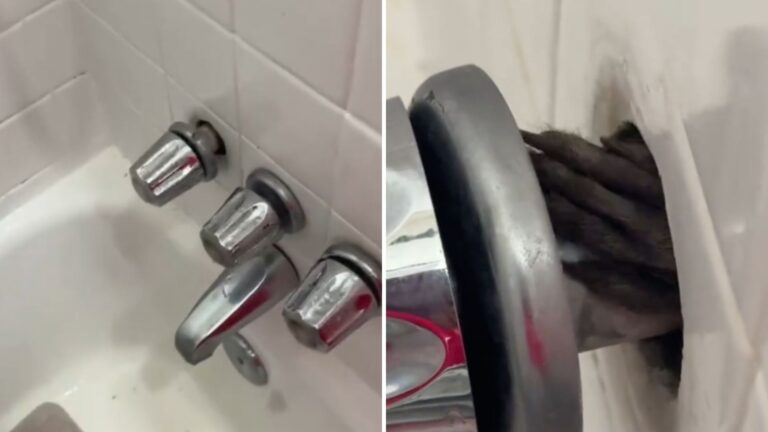Are Bengal Cats Hypoallergenic? Here’s What You Need To Know
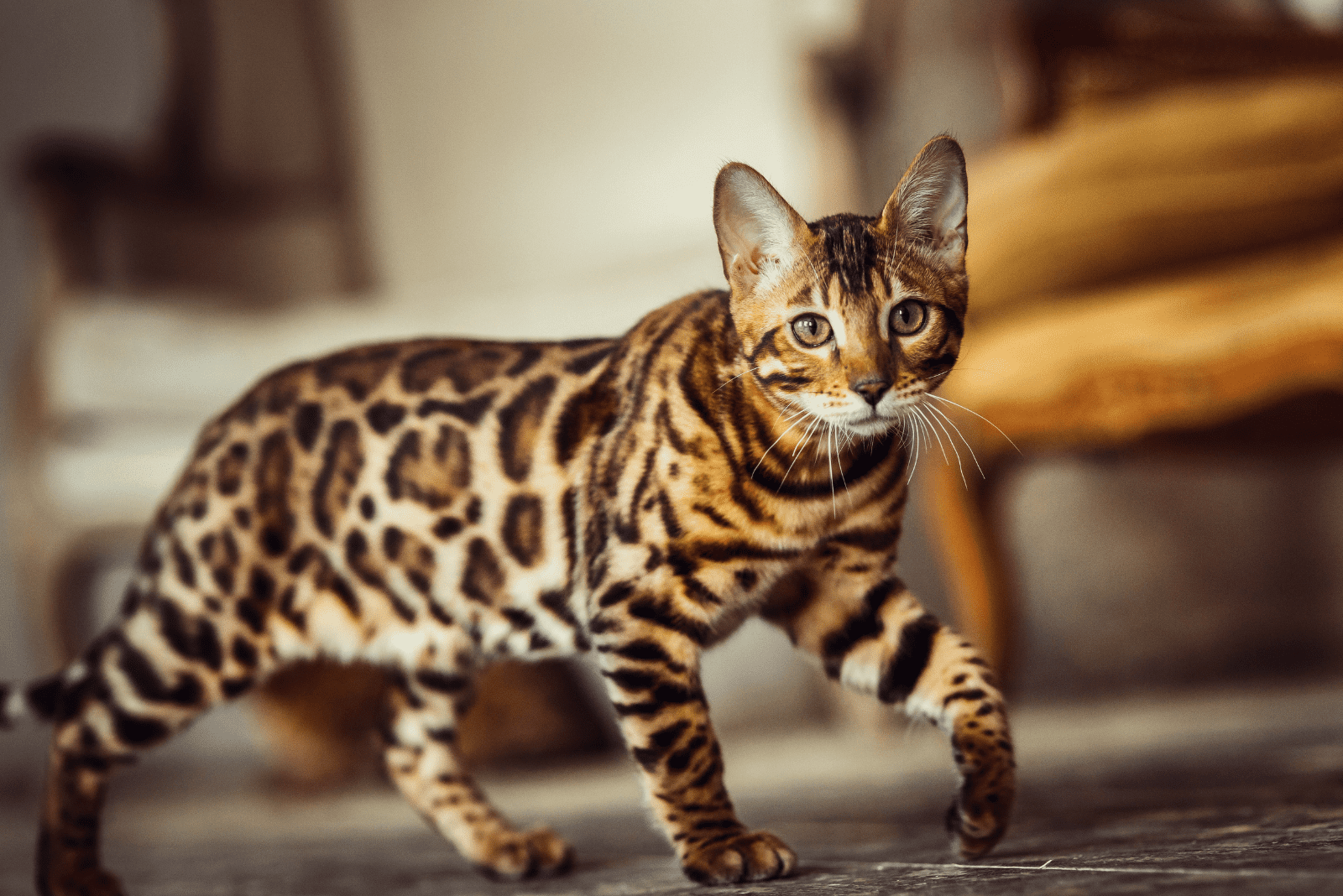
If you suffer from allergies, or you know a person who does, I’m sure you’re aware how unpleasant and uncomfortable allergy symptoms can be. Unfortunately, some people can be allergic to the animals they love the most – cats!
If you’re one of those people, you might be on the look-out for cats that won’t trigger your allergies, and the Bengal cat breed is sometimes listed as a cat that is suitable for people with allergies. So, are Bengal cats hypoallergenic? Are they good for people that suffer from allergies?
The good news is that Bengal cats are considered to be hypoallergenic! This is because they produce a lower amount of the cat allergen (a protein known as Fel D1) in comparison to many other cat breeds.
This does not mean that they produce none of this protein or that they don’t cause allergic reactions at all. They still do produce the cat allergen, but in relatively low amounts that may be better tolerated by those with allergies.
Bengal cats are considered hypoallergenic because they have minimal shedding. As most of the allergens are actually found on the cat’s coat, less shedding means fewer allergens to inhale, which earns this cat breed its place on the “Hypoallergenic cat breed” list.
Continue reading to learn more about what causes cat allergies in humans and why exactly Bengal cats are considered to be a hypoallergenic cat breed!
Are Bengal Cats Hypoallergenic?
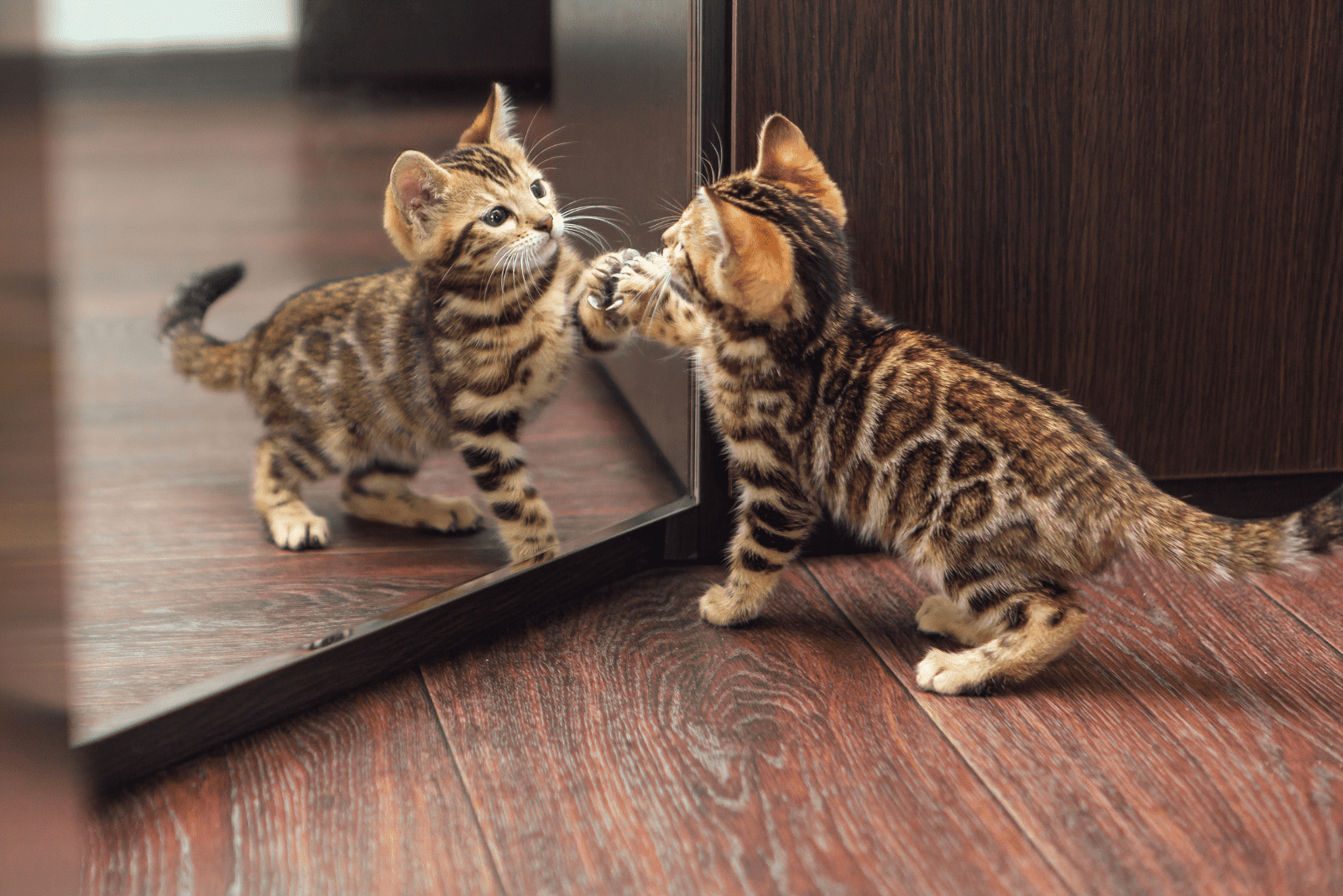
Although there are no scientific studies that clearly state this cat breed is hypoallergenic, it’s widely known that they rarely cause severe allergic reactions in allergy-prone individuals. Therefore, they are considered to be as close to hypoallergenic as you can get. Fortunately, there are facts to back this up.
Are Bengal Kittens Hypoallergenic?
Yes, Bengal kittens are hypoallergenic too. Some research even states that kittens produce fewer cat allergens (the substances that cause allergic reactions in humans) compared to adult cats.
What Makes Bengal Cats Hypoallergenic?
Let’s investigate why exactly Bengals cats are considered to be hypoallergenic.
1. They Don’t Shed A Lot
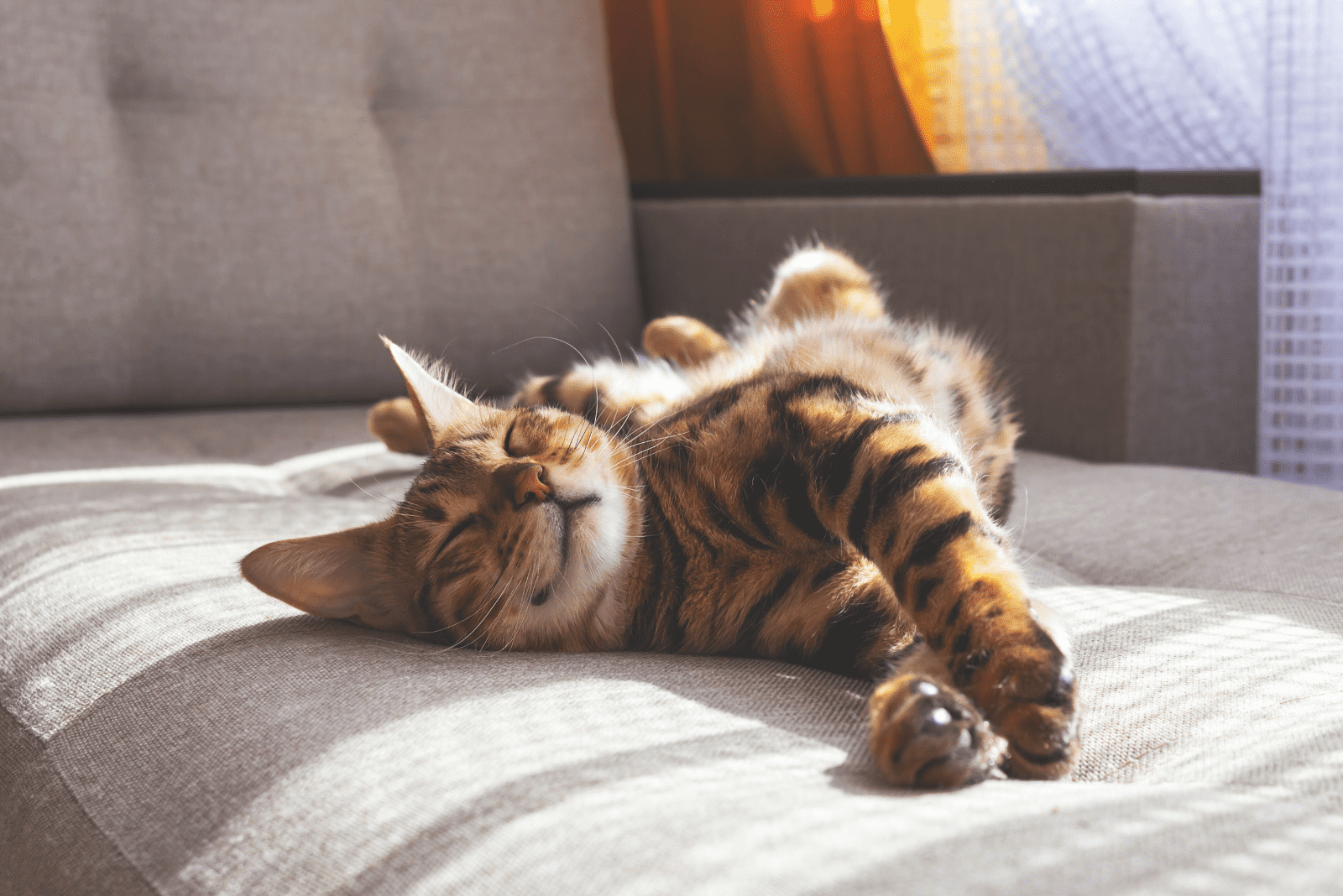
The fact that Bengal cats don’t shed a lot puts them on the Hypoallergenic cat list. They have a single coat and they’re short-haired – which means they have considerably less fur than most other cats. Breeders often refer to their coats as pelts because they are very short and soft.
Bengal cats don’t require a lot of maintenance or grooming, simply because their pelts are very fine and short. Having less fur also means less shedding, which is great news for allergy-prone people because less shedding means fewer cat allergen (less Fel D1) released in the environment.
A cat’s fur carries a lot of allergens. This is because the allergens (which originate in their saliva) end up on their fur during the cat’s daily grooming activity. So if there is less shedded hair, that also means a lower chance of encountering the allergens.
2. They Don’t Put Out A Lot Of Dander In The Air
The cat allergen Fel D1 is produced by the sebaceous glands in the cat’s skin. Although not as much is produced in the skin as in the salivary glands, it is still present. Also, apart from the allergen being present on the skin due to the sebaceous glands, the allergen also reaches the skin via the process of grooming as the cat’s saliva (which is filled with allergen) is transferred to the cat’s coat.
Dander is essentially dead skin cells and it’s completely normal for a cat’s skin cells to flake off. The process of skin renewal is a natural process so every cat produces dander. Dander (the dead skin cells) contain the allergen within them! So, as the cat produces dander, it also releases an airborne allergen as well!
One of the reasons that the Bengal cat is considered hypoallergenic is that they don’t shed a lot, which also means they don’t spread dander as much as other cats. Less maintenance and grooming also means less hair, therefore less dander is being released to the environment to be inhaled by people.
3. Only A Theory: Allergies and Origins
There is another theory on why the Bengal cat produces fewer allergens and may be more suitable for those who are sensitive to cats. This is only a theory but it is certainly worth mentioning.
Some say that the reason why Bengal cats don’t cause severe allergic reactions is because of their origins. Bengal cats are one part domestic cat and one part Asian Leopard cat. Because they’re a hybrid cat breed, some believe their allergy-causing proteins are different from the allergy-causing proteins of other cat breeds.
It must be noted that this cannot be confirmed or denied as there are no scientific studies to back this up.
What Does Hypoallergenic Mean?
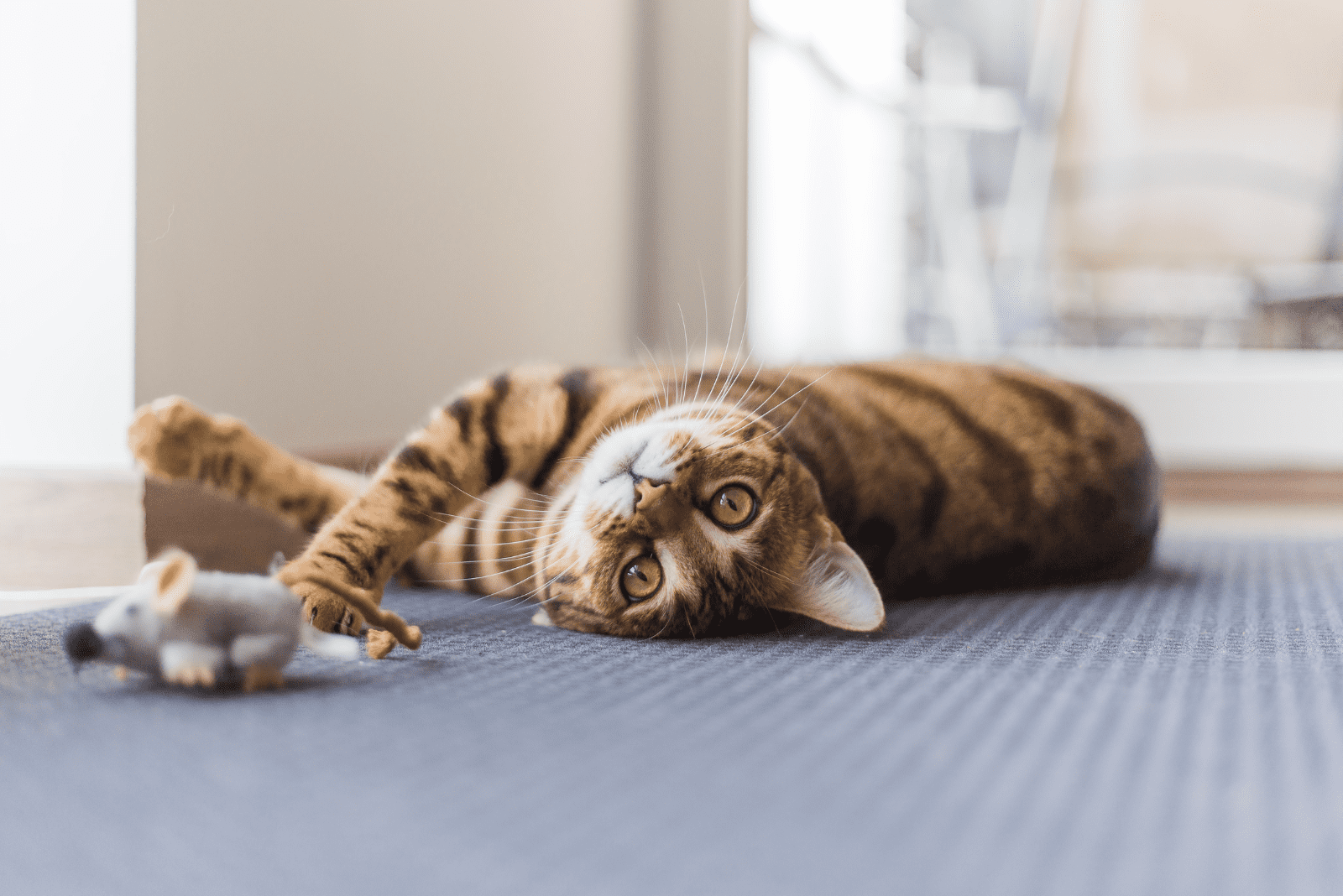
According to Merriam-Webster’s definition of hypoallergenic, it means that the substance in question has little likelihood of causing an allergic response.
The keyword here is little likelihood. It does not state absolutely no likelihood of causing an allergic response.
That means that, even though Bengal cats are not likely to cause allergies, they still can cause them for very sensitive allergy sufferers. There is no guarantee that any cat will be completely unable to produce allergens.
What Causes People To Be Allergic To Cats?
Did you know that the number of people allergic to cats is twice as large as the number of people allergic to dogs?! I found this to be a very interesting fact, and I found myself wondering why this is the case.
Allergy symptoms such as having a runny nose or sneezing arise from one particular allergen found in cat saliva – a protein named FeL D1!
Many people say they are “allergic to cats”, but that’s not entirely correct. No one is allergic to cats, but rather to a substance they produce, the so-called cat allergen.
What Exactly Is Fel D1?
The protein Fel D1 is a normal constituent of a cat’s saliva. It is also produced by glands in the cat’s skin. Interestingly, the function of the Fel D1 protein is still unknown. However, we know for a fact that it is the primary cat allergen to cause allergic reactions in humans.
Where Can Fel D1 Protein Be Found?
This notorious cat allergen can be found:
• Directly in the cat’s saliva
• On the cat’s skin
• On the cat’s fur (cats transfer their saliva to their coat as they groom themselves)
When cats shed and their dead skin cells flake off, this cat allergen spreads and can be found everywhere around the house as it’s found on both the hairs that shed and the dead skin cells that flake off.
Fel D1 is also famous for being air-borne and it tends to stay in the air for a very long time. That means that every person in the household will inhale this cat allergen and can have an allergic reaction to it if they’re allergy-prone.
Another feature of Fel D1 is that it sticks easily to surfaces it lands on, meaning simply airing out the room is not enough to remove it.
Do Some Cats Produce More Or Less Of This Cat Allergen?
It has been observed that kittens produce lower amounts of Fel D1 protein compared to adult cats. Also, unneutered males produce a higher amount of this allergen compared to neutered males and female cats (spayed or unspayed).
Even though females and neutered males tend to produce lower amounts of this allergen, it does not mean they cannot cause allergies, because they still do produce this protein in smaller quantities.
Tips & Tricks For Allergy-Prone Owners Of Bengal Cats (And Other Cats Too)

Allergies don’t always stop a cat lover from owning a cat, so fortunately, there are some tips and tricks to help you avoid suffering from an allergic reaction because of your feline friend.
1. Reduce Cat AllergiesThrough Diet
This might not be something you expected, but you can reduce the amount of allergens your cat produces via their diet.
You need to provide your cat with a very high-quality diet. A healthy, balanced, and high-quality diet will significantly improve your cat’s skin and fur so that your cat’s fur will not shed easily and its skin will not be as dry. This means it will have less tendency to flake off.
A healthy diet for a cat will be packed with protein and only contain a minimal amount of carbohydrates. Also, food rich in omega-3 fatty acids is highly recommended for healthy fur and skin.
2. Clean Your Home Often
If you know your cat’s hair and dead skin cells are causing your allergies then there is one “easy” thing you must do – clean your home regularly and often. This is easier said than done, but if it means not experiencing allergy symptoms, it is worth the added effort.
Cleaning your home often means less hair, and less dander, which means less Fel D1 – the cat allergen that causes your allergic reaction.
So make sure you regularly clean the rooms your cat is in, make sure the floor and other surfaces in your home are allergen-free, and hopefully your allergy symptoms will be reduced.
3. Groom Your Cat Frequently

Another way to reduce the exposure to cat allergen is to groom your cat frequently. In this way, the cat’s loose hair will not be naturally shedding all over the house, but will end up in the trash and away from the allergy-prone individual.
Less shedded hair around the house means less saliva (because shed hair is covered with dried saliva due to the cat grooming itself), and therefore there will be cat allergen floating around. This should hugely reduce the risk of anyone having an allergic reaction.
It is not recommended to bathe a Bengal cat often as this dries out their skin, and dry skin tends to flake off. That is an issue because a cat’s skin carries allergens, so you actually want to prevent the cat’s skin from flaking off. Additionally, bathing only reduces the amount of allergens on your cat’s coat for a short period of time, as cats groom themselves very often.
4. Get An Air Purifier
Air purifiers can be life-savers for people that suffer from allergies from airborne allergens. If you’re experiencing cat allergies, this device can be a great option!
The best type of air purifier device is the HEPA air filtration system. HEPA means High Efficiency Particulate Air. What these devices do is trap airborne allergens as the air travels through the filter.
In this way, cat allergens (allergen-carrying hair and skin flakes to be more precise) are efficiently trapped and prevented from leaving. The result is clean air, free of the nasties that cause the allergic reaction!
5. Make Sure The Litter Box Is Clean
The litter box is a place that cats visit regularly throughout the day so it’s likely that a lot of hairs and dander will build up there, especially if it’s not cleaned on a daily basis. For this reason, you need to make sure the litter box is cleaned regularly.
It is best if a non-allergic family member has the job of cleaning the litter box frequently so that the allergy-prone individual is exposed to as few allergens as possible.
6. Use Anti-Allergy Medication
A very efficient way to prevent the allergic reaction from becoming severe or preventing an allergic reaction from arising completely is taking anti-allergy medication. Of course, there is no guarantee they will work 100% of the time, but they do work well for many people.
Most common allergy-medications are antihistamines. Histamine is a chemical compound that causes an allergic reaction when the body encounters an allergen. If the release of this chemical is stopped, there will be no allergic reaction; that’s the principle on which these types of medications work. Speak to your doctor if you feel this might help.
Are There Other Hypoallergenic Cat Breeds?
Now that you know the answer to Are bengals hypoallergenic?, you might be wondering Are there other hypoallergenic cat breeds?
Yes, there are other hypoallergenic breeds of cats, including:
• Balinese (often named long-haired Siamese)
• Sphynx
• Oriental shorthair
• Burmese
• Russian Blue
• Devon Rex
• Cornish Rex
• Siberian
• LaPerm
These breeds cause fewer allergic reactions for cat allergy sufferers, but they are not completely cat allergen-free. They simply produce a lower amount of the cat allergen, but they can cause allergic reactions.
FAQ
Do Bengal Cats Have A Lot Of Fur?
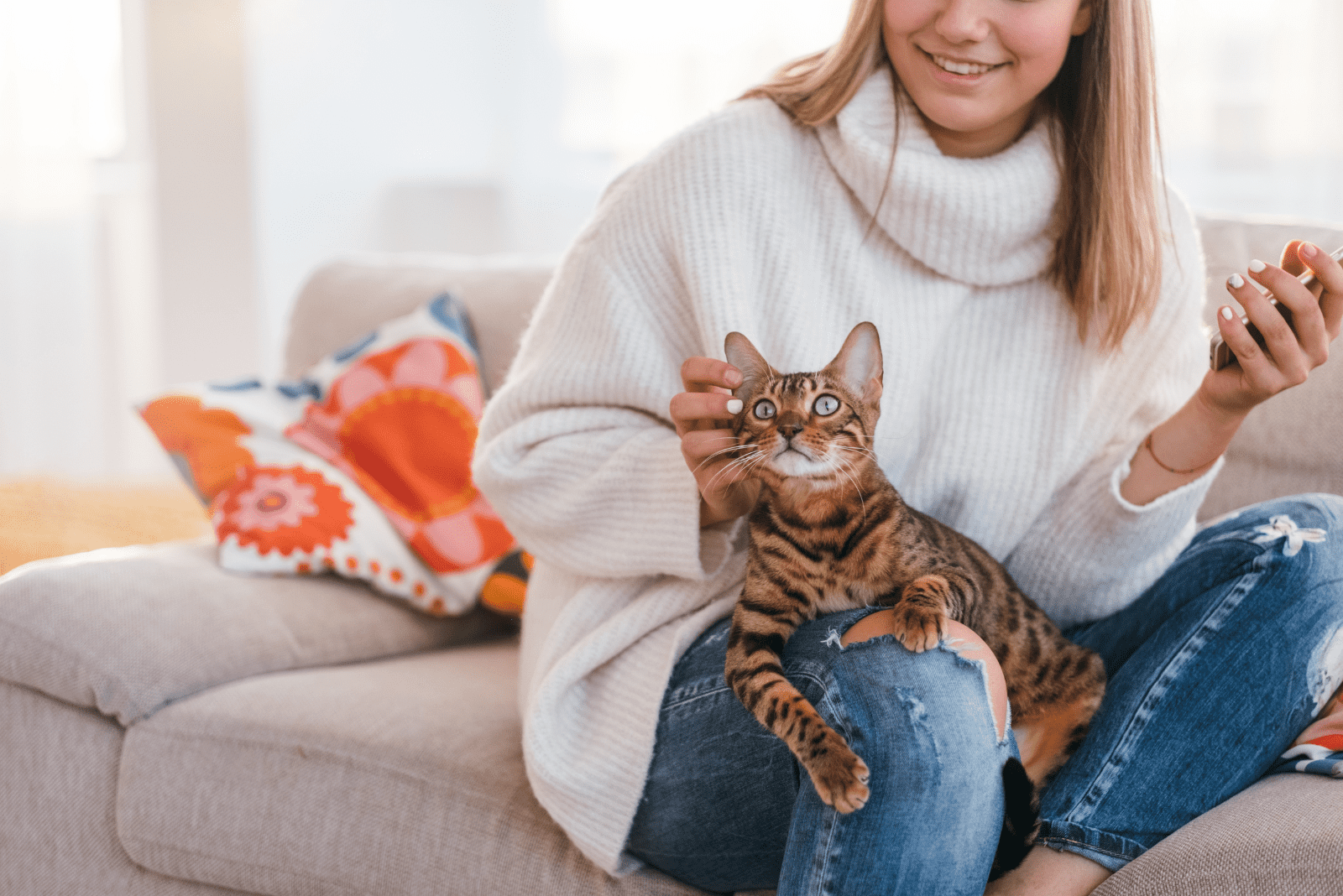
No, bengal cats do not have a lot of fur. Technically, they have pelts. This is a single layer of fur; Bengals cats have no undercoat or topcoat.
As you might already know, most domestic cats have both an undercoat and a top coat, which makes Bengal cats very unusual. They are short-haired, so they have less fur compared to long-haired cats.
Do Bengal Cats Produce Dander?
Yes, Bengal cats produce dander. Every cat does; there is absolutely no way to prevent a cat from producing dander.
Dander is loose and dead skin cells, and it’s completely natural for cats to produce these. Skin is constantly renewing itself and dander is made of the outermost dead skin cells that are regularly replaced by new ones.
Can You Have A Bengal Cat If You Have Allergies?
The decision of whether to have a Bengal cat or not depends on the severity of your allergies. Some people have a mild allergy to cat allergens, while others have a severe reaction to even the smallest amount of cat allergens.
Considering that Bengal cats are hypoallergenic rather than totally allergy-free, you can expect to have some kind of a reaction to their presence. If you’re mildly allergic, you might not experience any allergy symptoms.
However, if you’re very sensitive to cat allergens, having any type of cat, including the Bengal cat, can be a problem for you.
What Is The Most Hypoallergenic Cat?
The most hypoallergenic cat is the Sphynx cat. Hair is the main carrier of cat allergens and these cats are completely hairless.. No hair means allergen levels are minimal; low enough that they rarely cause any allergic reaction, even in allergy-prone individuals.
So if you’re very sensitive to even minor amounts of cat allergen, the Sphynx could be the perfect cat breed for you!
Final Thoughts
If you’re suffering from cat allergies and you absolutely love cats, I’m sure you will be interested to find out more about hypoallergenic cat breeds and potentially finding a future pet!
If you’re a fan of beautiful Bengal cats and are wondering Are Bengal cats hypoallergenic?, you’ve got your answer. Yes, Bengal cats are hypoallergenic.
Bengal cats are hypoallergenic because they don’t shed a lot due to their short, single-layered coat. Cat hair is the primary carrier of cat allergens, so less shedding means fewer encounters with the allergen!
The cat allergen that causes symptoms such as sneezing, a runny nose, and red eyes, is a protein named Fel D1 and it is found in a cat’s saliva, skin and hair. Luckily, Bengal cats require less grooming and they don’t shed a lot so there should be less allergy-causing hair and cat dander in the house.
If you’re eager to become a cat owner, Bengal cats might be a great choice for you if you’re not severely allergic to small amounts of cat allergen. Even though Bengal cats are hypoallergenic, they are not allergy-free; they can still cause an allergic reaction in extremely sensitive individuals.
I sincerely hope you found this article interesting and have learned something new. I wish you the best of luck in your pursuit of a cat that will suit your needs!



